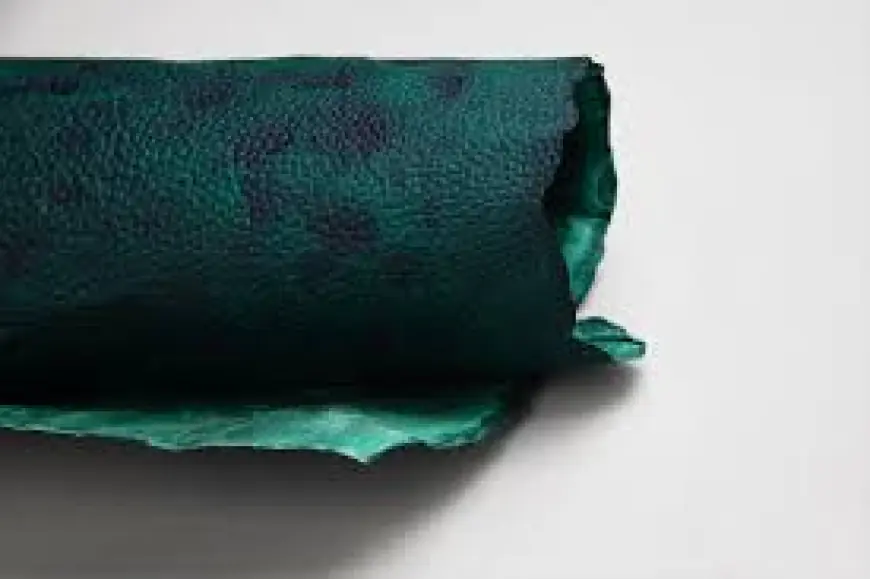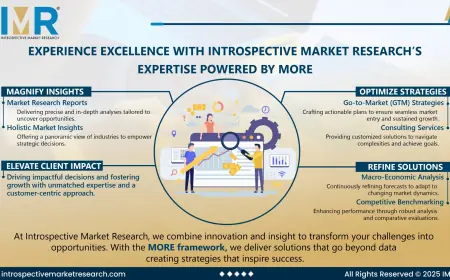Bio Based Leather Market research highlighting investment trends and sustainable manufacturing adoption in global fashion industry
The bio based leather market research highlights investment trends and sustainable manufacturing adoption in the global fashion industry, emphasizing growth potential, eco-conscious consumer demand, and technological innovation shaping sustainable material strategies worldwide.

Bio based leather market research explores how investment trends and sustainable manufacturing adoption are driving growth in the fashion industry. Companies are increasingly allocating capital to develop plant-based, mushroom-derived, and lab-grown leather alternatives. Investments focus on advanced production technologies, eco-friendly materials, and scalable manufacturing processes. The fashion sector, influenced by rising consumer awareness and regulatory pressures, is adopting sustainable leather solutions for footwear, handbags, apparel, and accessories. These strategies support market expansion while maintaining ethical and environmental standards, positioning bio based leather as a key material in sustainable fashion globally.
Investment Trends Driving Growth
Investment trends in bio based leather focus on research and development, infrastructure, and strategic partnerships. Venture capital and private equity funding target startups specializing in innovative sustainable materials. Established fashion brands invest in production facilities and technology upgrades to ensure scalability and efficiency. Collaborative investments with material developers accelerate innovation and reduce time-to-market for new products. These investment strategies enable companies to meet growing consumer demand for sustainable, high-quality leather alternatives while expanding market presence globally.
Sustainable Manufacturing Practices
Sustainable manufacturing is central to adoption and growth. Companies implement processes that reduce energy consumption, water usage, and greenhouse gas emissions. Plant-based and lab-grown leathers inherently require fewer resources compared to conventional leather. Waste reduction initiatives and circular economy practices further enhance sustainability. Advanced coating and finishing technologies improve durability and aesthetics while maintaining eco-friendly standards. Fashion brands integrating these practices demonstrate commitment to ethical production and environmental responsibility, attracting conscious consumers and reinforcing brand reputation.
Fashion Industry Applications
The fashion industry represents a primary market for bio based leather. Designers are incorporating sustainable materials into footwear, handbags, jackets, and accessories. Premium and mid-range segments benefit from high-quality alternatives that align with ethical and environmental values. Innovations in texture, finishes, and durability ensure products meet consumer expectations. By prioritizing sustainable manufacturing, brands reduce environmental impact while maintaining style and functionality. This integration drives growth opportunities, encourages brand differentiation, and strengthens competitiveness in global fashion markets.
Consumer Demand and Adoption
Consumer demand is a key driver for investment and sustainable manufacturing adoption. Eco-conscious buyers prioritize products that are ethically sourced and environmentally responsible. Increased awareness of the impact of traditional leather motivates consumers to choose bio based alternatives. Brands respond by emphasizing transparency, certifications, and sustainable production methods. Marketing campaigns highlighting ethical and eco-friendly initiatives enhance consumer trust. Rising demand encourages companies to invest in research, technology, and manufacturing improvements, ensuring scalable adoption across multiple fashion segments.
Regional Market Insights
Regional factors influence investment and adoption strategies. Europe leads in sustainability regulations, consumer awareness, and investment in eco-friendly materials. North America shows consistent adoption, particularly in premium fashion brands. Asia-Pacific presents rapid growth due to rising disposable incomes, urbanization, and increasing environmental consciousness. Latin America and Africa offer emerging opportunities where strategic investments can establish production capabilities and increase awareness. Companies tailoring investment and manufacturing strategies to regional conditions achieve better market penetration and long-term growth.
Opportunities and Challenges
Opportunities include the growing popularity of sustainable fashion, availability of funding for innovation, and rising consumer willingness to pay for eco-conscious products. Challenges include high production costs, scalability concerns, and the need for consumer education. Companies addressing these challenges through strategic investments, advanced technology, and effective marketing are better positioned for success. Sustainable manufacturing adoption not only supports market growth but also enhances brand reputation and long-term competitiveness.
Future Outlook
The future of the bio based leather market in fashion is promising, driven by investment trends and sustainable manufacturing adoption. Advances in technology, combined with growing consumer demand, will support scalable production and high-quality products. As awareness of environmental and ethical considerations increases, bio based leather will become a preferred material for footwear, handbags, apparel, and accessories. Strategic investments and sustainability-focused practices ensure long-term growth, positioning the fashion industry as a leader in global adoption of eco-friendly leather alternatives.
What's Your Reaction?
 Like
0
Like
0
 Dislike
0
Dislike
0
 Love
0
Love
0
 Funny
0
Funny
0
 Angry
0
Angry
0
 Sad
0
Sad
0
 Wow
0
Wow
0

























































